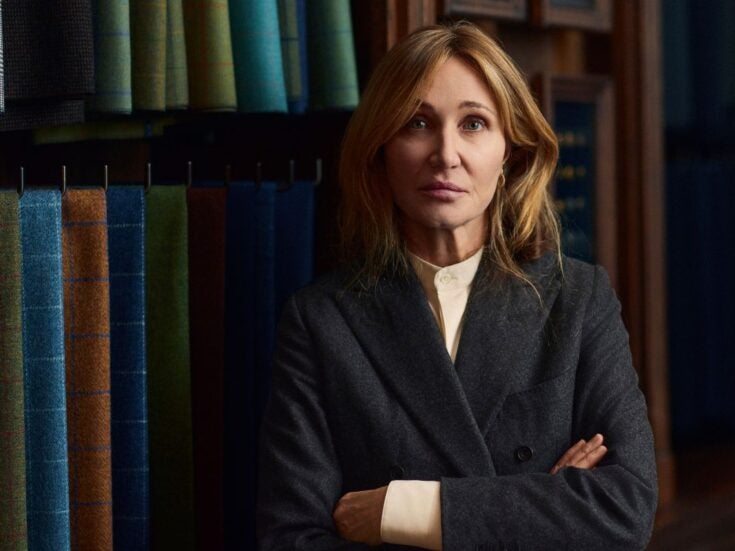The Wine Investment Fund talks us through the peaks and troughs of critic Robert Parker’s choicest wine (and his influence)
In 1978 an American lawyer, Robert Parker, produced the first issue of The Wine Advocate, a magazine offering wine reviews free of influence from advertisers, merchants or producers. This publication would in time change the way that the world buys, sells, talks about and even makes wine. Within ten years of its launch, Parker had become the most influential wine critic. He still holds this position today.
In February 2015 Parker announced that he would no longer be rating Bordeaux at the en primeur stage, the highest-profile area of his work. Although he will continue to rate wines further down their evolutionary track, this move could significantly reduce his influence.
To take one of many examples of the impact of Parker’s ratings, we show below the price history of Bordeaux’s Ch’teau Smith Haut Lafitte 2009. This traded at ’600-’700 per case in the first couple of years of its life. In February 2012, Parker upgraded his rating from 96-98+/100 to the ‘perfect’ 100/100. The wine increased in price by 150 per cent, effectively overnight.

Source: liv-ex.com
Needless to say, a critic with the power to move markets to this extent has attracted criticism. Perhaps the strongest objections relate to a change in the way some wines are being made, the allegation being that they are produced to appeal to Parker’s (perceived) tastes to gain high ratings and, in turn, higher prices.
This, it is said, reduces diversity and risks losing the influence of terroir in favour of a set winemaking procedure. Terms have even been added to the wine lexicon: a wine made in this way is said to be ‘Parkerised’. As wine investors, we do not need to concern ourselves with this debate: we are only interested in Parker’s influence on prices.
At the Wine Investment Fund, our approach to the fine wine market mimics that of an equity fund. We first define a ‘universe’ of wines to consider for our portfolios and then build a model to split these wines into ‘buys’, ‘holds’ and ‘sells’.
In this model, we take the current market price and assume that it has a number of influences, one of which is the critical rating of the wine (others include the ch’teau, the vintage etc). We therefore need to calculate the value of a Parker rating. The results are illustrated below:

The graph shows the average case price of wines in our universe in Parker’s rating categories on the horizontal axis. The link between higher ratings and higher prices is clear, but the graph also shows its exponential nature. Price increases are much sharper for each ratings step towards the top end: there is a large premium for the highest rated wines.
To show the changing influence of Parker over time, we take a ratio of the average price of a wine rated 100 to the average price of a wine rated below 90. The development in this ratio is shown below:

The ratio has fallen from a multiple of around eighteen times in 2009 to twelve times in 2015. This means that the premium for wines rated 100 has fallen: in other words, Parker’s influence over the period has reduced.
Looking across the whole range of ratings, there is a fall of approximately 25 per cent on average in the extent to which wines with higher Parker ratings achieve higher prices.
We are often asked how our approach will change following Parker’s recent announcement. As we do not invest at the en primeur stage, and Parker will still be rating wines later in their lives, the impact might be limited. However, as mentioned in the introduction, the change might reduce Parker’s overall influence too.
In a perfect world, the information which feeds into our model should be an average of all available critics’ ratings, weighted by their actual influence on the market price. However, at present Parker’s influence, even after the reductions mentioned above, is such that it would require a 90-95 per cent weight in the average. In practice, other critics can be ignored for these purposes.
But since at any time we can observe and calculate the influence on prices of any significant critics on the market, if Parker’s influence reduces, we will simply add in other critic(s) to our model as the market warrants.
Even now we do not ignore other critics altogether. We use them to forecast how Parker’s ratings may change in the future by analysing which wines Parker has previously rated lower than the wider consensus (which may receive an upgrade) and which higher (which may be downgraded).
One example was L’oville Poyferr’ 2000, which we bought ahead of Parker’s re- review of the 2000 vintage. L’oville Poyferr’ was indeed the major winner from this re-review, increasing from 95 to 97. The value of our holdings rose by 20 per cent in the following month.
Robert Parker’s influence on the prices of investment-grade wines has fallen by around 25 per cent in the last five years, even prior to his recently announced (partial) retirement.
Even so, Parker remains the dominant influence on prices. In our investment-led approach it does not matter whether this is a good thing, whether Parker is too powerful or even whether his assessments are ‘correct’ (if this were possible to measure).
We simply observe that he does influence prices, quantify this, input it into our models and adjust our buying and selling decisions accordingly. If and when other critics take his place, we are able to incorporate this without disrupting our overall tried-and-tested approach.






